










Follow E ELEMENTS
Elements magazine is published quarterly by PBA Health. 2022 PBA Health. All rights reserved.


©

You know your primary wholesaler contract is the most important key to the future of your business. But do you know it well enough to unlock the best cost of goods for your pharmacy? Many pharmacies think they do, but they don’t.

Elements magazine
advice,
With MyFluVaccine® you can take control and manage your flu inventory with ease while meeting your flu clinic demands. Our revolutionary online vaccine ordering platform paves the way to help you improve your patients’ care.
MyFluVaccine® (MFV) is a program of FFF Enterprises Inc., the nation’s largest and most trusted distributor of flu vaccines and critical-care biopharmaceuticals.

You’re on your toes every second of the day in your independent pharmacy. Your patients come first, with everything else ensuing, including your own health and coverage. And with the end of the year just around the corner, you might be worried you’ll lose the money you didn’t use in your health savings account (HSA).
The good news is your health savings account has your back. It’s not a use-it-or-lose-it account, so you won’t lose your money if you don’t use it by the end of the calendar year. Your HSA allows you to set aside pre-tax dollars for qualified health expenses, similar to a flexible savings account (FSA), and growth is also taxfree. Withdrawals used for qualified healthcare expenses are also untaxed. And while anyone can deposit money into your HSA, the internal revenue service (IRS) does set an annual limit each year.
An FSA, on the other hand, is a special account used to pay for certain qualified, out-of-pocket healthcare costs. It’s a great tax savings tool, and it has a little more variety of what it can be used for. One advantage is that your funds are immediately available the day you enroll. Depending on how much you contribute at the start, you will have access to that money immediately for qualified medical expenses. However, be aware that an FSA requires you to use the money within the plan year, and if you leave your job, you forfeit your FSA funds.
In the meantime, you can keep your HSA account as long as you want. The money can be used on your family’s medical expenses: deductibles, copayments, coinsurance, and more. If you spend what’s in your HSA on current healthcare expenses, you still benefit from the pretax contributions that reduce your taxable income.
The catch is, you can only contribute to an HSA if you have a highdeductible health plan (HDHP). If you’re covered by Medicare and Medicaid or claimed as a dependent on someone else’s tax return, you cannot open an HSA.
Another benefit is that you can change your payroll withholding rate at any point throughout the year. This means you don’t have to determine the amount before the year starts like you would with an FSA. And once you reach the magical age of 65, you can use your HSA money for any expense. However, if not used for healthcare costs, the withdrawal would be subject to an additional tax of 20 percent. It’s a requirement that you report any distributions not used for medical expenses on Form 8889 with your federal income tax return. Of course, there are exceptions to this rule. If you’re 65 years old, disabled, or the distribution is made due to the death of the HSA holder, the IRS will not assess the additional penalty.
What happens if you've opened an HSA and then drop your high-deductible health plan? You can keep your account, but you cannot deposit money into it. However, you can spend or save the funds that are already in it.
You can contribute to your HSA at any time throughout the year (up to the annual limit). Here are some ways you can contribute:
You can have a set amount taken out of your paycheck before taxes.
Deposit money that’s already been taxed. In fact, you can deduct it from your tax return regardless of who it came from.
Invest the funds into your HSA to earn interest (they may require a minimum account balance).
You can move money from an IRA to your HSA once. This is called a one-time rollover.
If you don’t have an online presence for your pharmacy just yet, don’t panic. Breathe in, breathe out, and keep reading. This is your first step. Your website will be your digital storefront. It’ll be your own space to publish all of the information about your products and services. The easiest way to whip up your own website is to check out free builder tools, such as Wix, Weebly, and Mailchimp, which provide easy-to-use templates for simple websites.
To get started, check out your competitions’ websites. What about their sites stand out most, the design or content? What are their unique selling points? If you don’t already have a site, think how you’d like your own website designed and laid out. If you already have one, check to see if you can improve it in any way. Does it need to be more personable?
Having an online presence in today’s world is vital. It’s where the majority of customer journeys start. With a quick Google search or the opening of an app on their phone, they can check out a store before they decide to shop there. The same goes for purchasing their medications.

E-commerce isn’t new. In fact, its growth has been quick due to customer demands and the recent pandemic. As a result, the days of running to the pharmacy to pick up a prescription have slowed way down. Healthcare services have gone virtual, and ordering prescriptions online has become crucial. What’s more, it doesn’t seem to be coming to a halt anytime soon, as many consumers have grown comfortable with the instant gratification the web offers. This is why your online presence is paramount to keeping up with the Joneses.
Remember: Your website reflects your business. A good site includes a welcome message to its visitors and information on what sets your pharmacy apart from others. Give it your own personal touch, and add an emotional call to action. In other words, pinpoint the user’s problem and tell them how you plan to help them. Add photos of yourself, your employees, and your physical pharmacy store. By bringing out an emotional connection between you and your website users, they’ll feel a genuine connection and find your pharmacy more relatable.
Once designed, put yourself in your patients’ shoes. Look closely at your website and ask yourself: Is your website user-friendly and easy to navigate? Does the design match your brand? Is the text easy to read and understand? Did you highlight main points and customer needs? Do all of the pages have the same text size, font, and color scheme? If your site is missing even one of these, go back and fix it. You’ll be happy you did.
If you already have a website, when was the last time you updated it? If your site’s design and information date back more than a year, it’s time to take action. An outdated website is sure to make viewers click the little “x” in the corner and move on to another pharmacy’s site.
As part of your website’s update, include some of the following additions to help drive more patients to your site and keep them coming back:
• HEALTH BLOG: Have a blog page on your site where you write monthly or weekly articles on healthcare news, new drug treatments, vaccines, or whatever is on your mind. Just be sure to market your blog effectively so it gets regular viewers, and add a photo to each of your posts.

• REFILL/TRANSFER PAGE: In today’s world, your patients want an effortless way to order their prescriptions. Adding a page on your website where they can refill or transfer their prescriptions will have them coming back to your site regularly.
• ONLINE SHOP : A shopping page on your website will make it easy for your patients to buy the things they want or need without having to leave their home. You can sell anything from personal-care products and diabetes supplies to vitamins and OTC medications. Offering next-day delivery is something people expect from online retailers. Implementing a system of paperless prescriptions and delivery will keep your patients happy.

• CONTACT PAGE: This is important. Without your contact information, how will prospective patients know how to reach you? Include your pharmacy phone number, email address, and website address.
Add personality and flair to your brand and connect with your audience in a more conversational way. But before you choose your platform, first identify your customer base. If you’re in an area surrounded by college students, having a presence on Instagram or TikTok would be appropriate. However, TikTok would not be a good choice for an older audience. Facebook, however, is the perfect place for consumers to find store information such as hours, location, and any promotions going on. Plus, it’s a great way for your pharmacy to interact with the community and maintain a presence with potential customers.
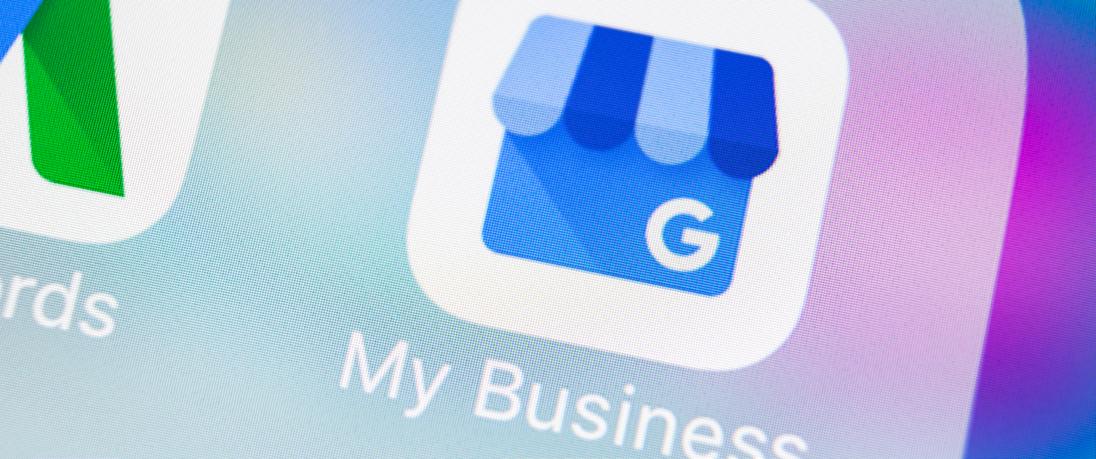
This is one of the most important social media marketing tools for your pharmacy. Not only is it free, it’s easy to use and can help customers find you. Be sure to include essential information like your opening times, street address, phone number, email address, and website address.



When people are finding directions to their destination, a good number of them rely on Google Maps. If your independent pharmacy isn’t already there, this is a wonderful opportunity to gain new patients. People searching for pharmacies on Google Maps clearly don’t already have one, or at least, one that they love. Easily add your pharmacy to Google Maps by following these steps from broadly.com:
• Sign into your Google My Business account
• Add new location on business homepage
• Enter your business name and business address
• Drop a pin (show where your business is located)
• Confirm business details
• Verify your business
Not sure if your business already exists on Google Maps? Go to google.com and enter your business name and city in the search bar. Click the Search button and then click a tab that says Maps. You should see a map of your area with listings of business names similar to yours. If yours doesn’t appear, you’re not on Google Maps yet. If you do see your business appear, and you didn’t add it yourself, follow the necessary steps to “claim your business on Google.” From there, you’ll be verified and given access as the owner.

One of the top places your pharmacy needs to be seen is on your patients’ smartphones. According to Statista, the number of global smartphone users in 2022 is 6.648 billion, or 83.32 percent of the world’s population. Pharmacies that don’t have an online presence will find it difficult to keep up with consumer demands.
The simplicity of ordering low-cost drugs from the comfort of home has eliminated your patients’ need to go anywhere. They can order their medications online or through an app and refill their prescriptions easily. As an added bonus, most pharmacies now offer curbside pickup, in-store pickup, and/or home delivery.
If you don’t yet have an app for your pharmacy, now is the time to look into one. A mobile app makes it easier to increase brand awareness and competitiveness. Mobile access to your pharmacy and staff can lead to better prescription management, better customer service, and patients can manage their health more efficiently and discreetly. When you’re ready to start looking into building your own pharmacy app, here are a few of the top platforms to check out:
• Digital Pharmacist (digitalpharmacist.com)
• Paubox (paubox.com)
• Solutionreach (solutionreach.com)
• Spruce Health (sprucehealth.com)
• Weave (getweave.com)
When you have an online presence, you’ll get the most out of today’s consumer interest in online pharmaceutical services. You’ll improve care for your patients by adopting the right technology and software solutions, and your independent pharmacy will stand out from the crowd and remain competitive.
Inmar’s product bundle is designed to increase productivity, store traffic, and profitability. Select the solutions that best meet your pharmacy’s needs and we keep it simple with one contract and measurable ROI.
01
Our clients recognize up to 25% more credit by leveraging Inmar’s returns management solution. Available on-site service combined with RxReturns Intel™ dashboards ensures robust reporting, enhanced visibility, maximum returns credit and manufacturer policy compliance.

This customer-friendly, secure medication take-back program generates publicity, community goodwill and store traffic while supporting efforts to combat prescription drug abuse and helping to protect the environment from the effects of improper drug disposal.
Cloud-based subscription service that streamlines DSCSA medication track and trace requirements, enabling transparency and regulatory compliance for your pharmacy.



USP <800>
Subscription-based service providing an annual Assessment of Risk for handling hazardous drugs to protect your staff and patients.
Inmar’s Rx Recon and Collections Services mitigate receivables risk, improve cash flow and deliver critical business-building intelligence.
Reach a broader audience by expanding your services in 2023
Spread your wings a little wider in the new year by adding more revenue-building services to your pharmacy practice. While regulations vary state to state, adding an additional service or two will allow you to increase your clinical interactions with your patients and generate additional revenue. The National Community Pharmacists Association shares this short list of some products and services you may not have thought to implement.
VACCINE CLINICS: It’s one thing to give vaccines, but holding immunization clinics is the key to growth. Reach out to local businesses, school districts, churches, government facilities, and daycare centers. Doing this will help you establish a baseline. Don’t just focus on one vaccine; include all of them. Employers can benefit from flu, COVID, pneumonia, shingles, travel vaccinations, and even standard vaccines. Make sure you include information on the cost benefits of having employees vaccinated.
According to the National Alliance of State Pharmacy (NASPA), 48 states, the District of Columbia, and Puerto Rico allow pharmacists to administer any vaccine, though some require a prescription, and some have limitations by patient age. The exceptions are New Hampshire, New York, West Virginia, and Wyoming, which have limitations on what vaccines are allowed.
POINT-OF-CARE TESTING: Research shows that point-of-care testing is predicted to make more revenue than vaccines for community pharmacies. During point-of-care testing, screening and treatment are completed during a single encounter. This improves access to care, counseling, and patient outcomes. Some of the common tests to offer include blood sugar, A1C, flu, strep, COVID, chronic disease screening, and chronic disease monitoring.
LONG-ACTING INJECTABLE DRUGS : Pharmacies can serve as alternate injection sites for long-acting injectable antipsychotic agents (LAIAs) and other medications. This can take place under collaborative practice agreements (CPAs) with mental health practitioners or through partnerships with LAIA manufacturers.
WEIGHT-LOSS PROGRAM : Does your community struggle with obesity? You can help them by starting a program to help them become healthier, live longer, and reduce their overall medical costs. A weight-loss service should focus on the long-term, overall health and wellness of the patient.
SMOKING CESSATION COUNSELING: You can implement smoking cessation counseling in several ways. Several states now have statutes or regulations addressing pharmacist prescribing of tobacco cessation aids. You can try providing 30-minute consultations with patients to discuss their smoking options, including OTC nicotine replacement products and drugs the pharmacists can prescribe. You can charge a consultation fee to the patient, but the prescription drug dispensing is covered by insurance. A new Medicaid regulation provides payment for OTC nicotine replacement products as well.
DISEASE STATE MANAGEMENT (ASTHMA AND COPD): Both asthma and COPD can result in various comorbidities. So, whether you offer one-on-one or group sessions for asthma/COPD management, your patients can see long-term benefits to proper management and risk education. COPD patients need to stay up to date on their influenza and pneumococcal vaccinations, so focusing on free services is beneficial.
PHARMACOGENETIC TESTING: Pharmacogenetics is the study of how a person’s genes affect the way he or she responds to drugs. It’s used to learn ahead of time what the best drug or the best dose of a drug will be for a person. While it may seem new, the field isn’t new at all. The FDA has approved a long list of drugs that require or recommend genetic testing as part of their prescribing. Pharmacies that offer this service usually partner with a lab. The pharmacist collects the sample and can also help the provider interpret the results. Coverage for genetic testing varies based on insurance plan, the type of test ordered, and coverage considerations. While it’s sometimes covered by insurance, those who are uninsured or underinsured may have to pay up to $2,000.
MEDICATION SYNCHRONIZATION : This service is becoming more common and is now offered by 79 percent of independent pharmacies. Medication synchronization aligns all of a patient’s refills on the same day of the month. This saves the patient from making multiple trips to the pharmacy and keeps them from having to call in multiple refills throughout the month. That’s because you can call the patient prior to their appointment date and confirm all of their scheduled medications. Your patient then has the opportunity to request any as-needed medications. However, it’s important for patients to understand that while pharmacies don’t usually charge a fee to provide this service, insurance doesn’t
always cover the early refills required to align their medications. So, as their pharmacist, it’s wise to try to find an appointment date that’s centered around a more expensive, branded medication.
ADHERENCE PACKAGING: Offered by many independent pharmacies to help differentiate themselves from the chains, adherence packaging is a service where medications are packaged into blister packs or strips rather than bottles. A patient’s medications may also be packaged according to the day rather than by medication.
In addition to the extra services, many independent pharmacies have been implementing a mix of different products for additional cash flow, such as:

• HIGH-END SUPPLEMENTS : Be sure to offer a high-end solution to your patients, otherwise you'll miss out on that revenue. You’ll also need a team that’s trained to help sell the benefits of a higher-quality supplement. Be sure they’re able to effectively explain the difference between standard supplements compared to a higher-quality version to make sales.
• E-COMMERCE : These online stores have helped drive traffic, improve patient engagement, and compete with chains by allowing people to order online for same- or next-day pickup or delivery. They’ve helped showcase products at the same or lower costs, and highlight their products and services. E-commerce has also brought in new patients by offering products not available elsewhere.
• CASH PROGRAMS : These are available for any patient whether they’re insured, underinsured, or uninsured. Common cash prescriptions are for sexual health, cosmetic, weight loss, or chronic conditions.


• NUTRIENT DEPLETION : Your team will need some basic training before offering this service. To get these products sold, everyone needs to know how to sell specific supplements to coincide with prescriptions. Unless your team is comfortable making supplement recommendations based on the patient’s regimen, it’ll be tough for you to make many sales.
• CBD: Whether it’s something a pharmacy should offer is up in the air with everyone’s own opinions. However, CBD has been a significant revenue generator for many pharmacies.
Before making any changes in your business model, do your research. Not every clinical service will offer significant revenue, especially when you’re just starting out. However, experts are hopeful that new opportunities for reimbursement will come to fruition as insurers recognize the value of pharmacists’ contributions to healthcare. In the meantime, a little bit here and there can help your business grow.

If you wouldn’t DIY your dream home, why would you hammer out your primary wholesaler contract without professional assistance?
Hire a contractor for your contract. Your ProfitGuard crew will build on a solid foundation of nearly 40 years of combined experience negotiating more than $13 billion in contracts. With ALL wholesalers competing for your business, you know your contract is on the


level. Whether you build a contract to suit or join an existing group, you’re in charge.

A poorly built contract will put a ceiling on your profits. So, call your ProfitGuard professionals and dream a little.
By PBA HealthAn apple a day might keep the doctor away, but routine screens stop the need to intervene.
Community pharmacists know this. But do patients know how important routine screenings are to their health? Apparently not. As of 2015, only eight percent of U.S. adults received all the high-priority, appropriate preventive care recommended for them, according to researchers with the Agency for Healthcare Research and Quality. Nearly five percent of adults did not receive any such services at all.
“Some of the commonly known reasons for not getting the recommended preventive services include lack of health insurance; lack of a usual doctor or nurse; and problems with healthcare delivery, including wait times,” said Amanda Borsky, who led the study for the agency.

The National Academy of Medicine (formerly called the Institute of Medicine) estimates missed prevention opportunities cost the United States $55 billion each year—approximately 30 cents on every healthcare dollar.
Pharmacists are in a pivotal position to provide healthcare screenings, which in turn can improve the health of their patients and communities.
With over-the-counter hearing aids now available, you can test and treat your patients experiencing mild-tomoderate hearing loss. Just help them take an easy, accurate test online. The instant result will give you and your patients an idea of their “baseline” ability to hear. Then you can help them select the appropriate device. Be sure to have a plan to refer an audiologist if a patient shows signs of a more serious hearing problem or an underlying health issue. Learn more about how to profit while helping your patients by contacting PBA Health customer care at 800.333.8097 or customercare@pbahealth.com.



Pharmacists already provide medication therapy management services. You might offer a relevant screening or assessment by appointment, which conveniently coincides with the time your patient already picks up meds. You get to know your patient better, learn about possible drug interactions, clear up any compliance confusion, or suggest a specific supplement or product.
For example, a patient may take high blood pressure medicine. But a screening shows their blood pressure is still stubbornly high. Do they understand the need to consistently take their meds? Do they inadvertently take an over-the-counter product with a counteractive effect? The pharmacist might suggest purchasing an affordable, easy-to-use blood pressure monitor, then demonstrate how to use it.
Bremo Pharmacy in Richmond, Virginia, has offered a range of screenings for many years. “Our health screenings attract new patients into our pharmacy, and our current patients like having access to them as well,” said Regina Richardson, PharmD, PIC. “They serve both groups well.”
Pharmacists and healthcare providers have traditionally focused on biometric-type screenings, such as blood pressure, blood sugar, and lipids.
Bremo added A1C tests last year and food sensitivity tests two years ago. “The food sensitivity tests are especially beneficial,” said Richardson. “It gives us a chance to educate our patients and take time counseling them about lifestyle, food choices, and any medications they take. Plus, the tests are sent out to a lab, so we don’t have to pre-order supplies that we might not use before their expiration date.”
Bremo Pharmacy in Richmond, Virginia, offers one free health screening per quarter on a revolving basis, including blood pressure, glucose, and bone density (the pharmacy’s most popular). Regina Richardson, PharmD, PIC at Bremo, suggests several simple, low-cost ways to promote screenings.
Put up posters and hand out fliers. Also, verbally remind your patients about your screenings.
Highlight the importance of screenings in your e-newsletter. Promote a different screening in each issue.
Use a full list of screenings you offer. Otherwise, patients may not know you provide them.

Piggyback on events like February’s American Heart Month to promote complementary screenings.
The pandemic has highlighted the pressing need to focus on the whole person—particularly addiction and mental health.
Underscoring the urgency and scope of the issue, the U.S. Preventive Services Task Force recommended adults under age 65 get screened for anxiety and reiterated an earlier recommendation that all adults undergo routine screening for depression during routine care.


With screenings and clear, patient-prescriber-pharmacist communication and drug utilization reviews, pharmacists and staff can identify red flags such as “doctor shopping,” which can help mitigate the effects of substance abuse, particularly opioid dependency.
Screening is also considered the most effective way to prevent or reduce the impact of domestic violence. Seen as especially trustworthy and accessible healthcare providers, pharmacists don’t need expertise in interpersonal or intimate partner violence to help. It's common to not quite know how to handle such situations— that’s okay. It’s a good idea to first determine, contact, and consult with local support services. Then, if a situation involving intimate partner abuse, assault, or stalking arises, you’re ready to talk about personal safety, health concerns, and suggest a referral to resources or programs.
The National Health Resource Center on Domestic Violence provides patient brochures, safety plans, and educational tools to help healthcare providers respond to interpersonal and domestic violence in healthcare settings. Visit aaf.hhs.gov for details.
Offering screenings for the whole person can be profitable for your business and valuable for your community.
Have a dedicated, private, and comfortable space for all screenings or other confidential interactions. You should review recent clinical suggestions or take a continuing education class to ensure you’re up to date with current testing. It might also be a good idea to have a list of physicians for referral. Here are some of the more common screenings and assessments community pharmacists can include in their offerings:


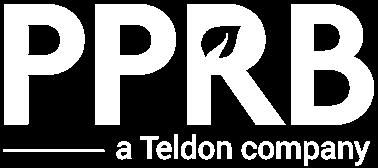


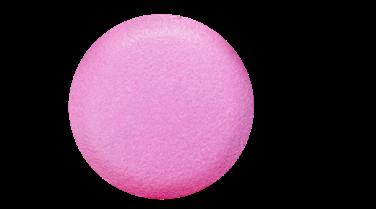




The challenges and opportunities as patient demand increases
one are the days when dispensing prescriptions for your patients was your only task. Today, pharmacists are doing a lot more and patient-care services are increasing. Many pharmacies out there now provide a growing list of additional services such as immunizations, medication synchronization, point-of-care (POC) testing, medication therapy management (MTM), counseling, chronic-care management, and patient education.
Nick Smock, President and CEO of PBA Health, PharmD, MBA, President of FPN, Vice President of APHA, and member of various state pharmacy and national associations, said pharmacies today provide much more than medications. They provide not only prescriptions and education, but healthcare, too.
“Pharmacists can do more than dispense medications. Today, they provide physical assessments, therapeutics, and clinical services such as blood pressure and immunizations. All of these things are taught in pharmacy schools, yet pharmacists still aren’t really known for that,” Smock, with over 40 years of industry experience, said. “People still view pharmacies as a place to simply pick up a prescription. We really need to expand consumers’ perception that you go to your pharmacy for healthcare.”
NICK SMOCK CEO, PRESIDENT PBA HEALTH
While the pharmacy workload is increasing, reimbursements for the clinical services provided lag. Many factors prevent pharmacists like you from getting reimbursed for your services. First, there is a lack of resources that explain the required steps to implement clinical services (especially as a billing provider). Add to that the obscurity of what services are covered, charting
requirements, credentialing, and the steps to enrollment. There are inconsistencies in state and federal agencies recognizing pharmacists as qualified care providers, which services are permitted, and the payment parity laws that require health-plan payment for pharmacist providers.
“The business side of pharmacy today is questionable in a sense because you really have to push a lot of prescription volume. Today, pharmacies are lucky to be reimbursed for the cost of the product. Previously, they could add their professional fee to the cost of the medication, but now the pharmacy benefits managers reduced the professional fee to a ‘dispensing fee’ that does not cover the prescription label and/or vial. Reimbursements are so low that you’ve got to look for other avenues to bring into your facilities,” Smock said. “The value of pharmacists and their help has increased since COVID because we were able to bill for vaccinations and provide more for patients. Vaccines at your local pharmacy are an important resource offered to patients since pharmacies are easily accessible.”
Phillip Rozell, PD of Medical Arts Pharmacy, said his store is still going strong providing vaccines for their patients. “We are still administering 20 to 60 vaccines per day,” Rozell said. “So far our team has administered over 39,000 COVID vaccines. Our clinical team has been involved and committed from day one.”
According to Smock, this may change as the PBMs and insurance companies continue to ratchet reimbursements lower and lower and force pharmacies to sell or close their practices.
“In my view, PBMs and insurance companies are shortsighted and should be paying pharmacies for their service to help reduce
Who are the top medical payers for your patients? Find out what their requirements are for credentialing and enrollment and fill out the provider applications and contracting steps.
Be sure it enables you to support medical billing and documentation for all services provided during the visit, along with your workflow needs.
Include such things as claims submission requirements; service, state, or protocol requirements; company policies; workflow; and billable services.
Alas! It's time to put all of your hard work into action. You now have the foundation and tools to successfully bill for clinical services offered.
This is the final step. Confirm claim transmission, monitor through rejection and denial management, and follow up on claims.
the overall medical cost of patients. In the past, and even today, prescription cost of healthcare is only 10 percent of the overall health cost of patients. The larger cost is medical care, accounting for 90 percent of spending. Pharmacy has been shown to reduce the cost while improving patients’ quality of life,” Smock said.
While the procedures by which pharmacists can receive reimbursement for patient-care services have advanced in recent years, the billing process remains inconsistent across systems and settings of care. Clearly, it’s your greatest challenge and opportunity.
“They said years ago, ‘Get into politics or get out of pharmacy,’” Smock said. “I have been thinking, ‘Today, get into services or get out of pharmacy.’ Pharmacists will have to get into services. You don’t want to let go of the product because we’re licensed to purchase, store, handle, and dispense. We don’t want to let go of that function, and we want to expand pharmaceutical and healthcare services. Today, pharmacy is positioned to offer a dual type of healthcare: product and service.”
To be successful, you need strong support from your pharmacy technicians. Technicians play a big part in combining services into pharmacy workflow and taking control of the process. Allowing your technicians to take on more significant roles can also help improve job satisfaction. Provide adequate training for them on: Claims submission requirements Technology systems
Interpersonal communication with patients and providers
Company policies/procedures, implementing new workflows, and documentation steps


Billable professional services (patient assessments, contraceptive education, emergency refills of insulin, opioid overdose prevention, and tobacco cessation counseling)
Billing management software systems and electronic medical records
Billing the claims to the health insurance plans

There are several methods for billing pharmacist patient-care services. The use of a particular method is dependent on the type of benefit providing coverage for the service, provider-payer contracts, care settings, and professional service agreements. The National Council for Prescription Drug Programs (NCPDP) shares this list of billing types.
CONTRACT-BASED REIMBURSEMENT: Pharmacists may be reimbursed based on contracts with payers or through professional service agreements with or between providers. The pharmacist and the health provider negotiate rates and billing methods. Right now, there is little standardization in such agreements. Payment can be fee-for-service or may be covered under a global rate, capitation, or similar arrangement.
DIRECT PATIENT PAYMENT: As a pharmacist, you can charge patients directly for their services on a cash transaction basis. You set the cost structure. Patients pay out of pocket for the service. They may receive documentation to get potential reimbursement through a flexible benefit program or from their health plan.
BILLING USING PROCEDURE CODES : Procedure codes can be found in the Healthcare Procedure Code System (HCPCS) and the Level I American Association CPT codes. Specific CPT codes were developed in 2005 for the payment of a Medication Therapy Management (MTM) service provided by a pharmacist. You can find information on the use of these codes at www.pstac.org.
INCIDENT-TO BILLING: The services provided by pharmacists may be delivered across various settings of patient care, such as a physician office or clinic, under the supervision of and in collaboration with a physician or recognized practitioner. The approach to filling in these settings is “incident-to” billing. This means the practitioner or clinic bills for the services of the pharmacist “incident-to” the practitioner or clinic service. The billing subject receives payment and then reimburses the pharmacist.
Medicare provides these further requirements:

• The services must be part of the patient’s normal course of treatment during which a physician personally performed the initial service and remains actively involved during treatment.
• The supervising physician must provide direct supervision. For group providers, any physician member of the group may be present in the office to supervise.


• The patient record should document the essential requirements for an incident-to service.


Here are some points to consider within the definition. It’s noted that the physician bills Medicare Part B as if they were the one performing the service. It’s not the pharmacist who is billing Medicare. Instead, you are providing the service incident-to the professional service of the physician. Because pharmacists are performing the clinical service, however, they’re eligible to receive partial to full financial credit when the practice submits for reimbursement from Medicare by including the pharmacist as a secondary provider on the encounter sheet or superbill. The physician must also have performed the initial patient service before subsequent visits by the pharmacist to be eligible for incident-to billing. This provides the physician a chance to establish the diagnosis and put together a treatment plan for the patient (which is another requirement for incident-to billing). Last, but not least, the physician must provide direct supervision of the pharmacist performing the incident-to service; but there are three different levels of supervision.
• General supervision: It’s required that the physician provides supervision of the service, but the physician is not mandated to be at the place of service.
• Direct supervision: The physician is required to be at the place of service and be immediately available to assist, but is not required to be in the room where the service is provided. Immediate supervision: The physician is required to be physically present in the room where the service is being provided.

You might find that administrators believe pharmacists are not eligible to perform incident-to billing because they’re not classified as a “provider” by Medicare Part B and are not specifically mentioned in Medicare rules as being able to perform those services. However, the American Academy of Family Physicians (AAFP) directly contacted and asked Medicare if pharmacists were eligible to provide clinical services in an incident-to manner. Medicare agreed with AAFP that pharmacists are eligible to provide clinical services in an incident-to billing model if they meet all the additional requirements.
The implementation of a signed collaborative practice agreement (CPA) between the physician and the pharmacist provides specific criteria for future services provided by the pharmacist. It’s an established and accepted mechanism to fulfill the intent of the Medicare incident-to billing provision. CPAs require physicians to guide patient care, including determining which patients are seen by the pharmacist, which conditions or medications the pharmacist will manage, and what degree of responsibility the pharmacist will have.

Medicare openly supports clinical services performed by pharmacists in an incident-to manner. Though pharmacists aren’t recognized as providers at the federal level, most states have language authorizing CPAs, which offer legal authority at the state level.
As national pharmacy organizations continue to push towards formal recognition as providers, the use of incident-to billing in the meantime will allow the services performed by pharmacists












receive reimbursement for your patient-care services, negotiation-specific contracts are required in non-institutional, physician-based offices and clinics. As another option, pharmacist-based services can be included into a pay-for-performance (PfP) incentive or a capitated model of payment. Billing defaults to Medicare regulations if there are no specific contracts with private payers.
If you’re employed by someone else but also practice in a physician-based clinic, you can bill your services using incident-to billing. However, keep in mind the basic nine requirements of Medicare.
Medication Therapy Management (MTM) codes are not recognized, especially when Medicare beneficiaries are you in a physician office. This is because physician offices fall under Medicare Part B. MTM services recognized under Part D and are paid through administrative fees to a Prescription Drug Benefit Plan

You can bill for clinical/cognitive services (which may vary by state) and the Medicare Part D Prescription Drug Plans (PDP) available to you at your location. Several states will pay you to provide various levels of cognitive to state Medicaid beneficiaries. And while you can submit bills to any provider, they will need to determine which providers are eligible under a patient’s particular health insurance plan to submit bills. There are also rules of participation, so they may need to sign a participation agreement, and then standard procedures will need to be followed in submitting the bill.
Under a Medicare program called Transitional Care Management, services are used to bill physician and qualified non-physician providers’ care management following discharge from an inpatient hospital setting, observation setting, or skilled nursing facility. As a pharmacist, you can serve as a qualified non-physician provider to provide some of these services. Be aware that the claim for these services must be submitted under a Medicare-recognized provider, so a pharmacist in this role must collaborate with a licensed Medicare provider.
While recent legislation enacted in several states now enables you to provide clinical services through collabprotocols with physicians, specific rules exist under which you can practice. Services such as medication monitoring, dosage adjusting and regiments, and changing prescriptions when required are commonly acceptable across most states, but with a few exceptions. However, most collaborative protocols between you physician are narrow in scope, thus limiting pharmacist clinical services to specified patients and disease
Payments for pharmacy services provided through state Medicaid programs vary from state to state. Smoking cessation, counseling, and other preventive services are the most commonly reimbursed services in the 15 states that provide Medicaid compensation for direct patient care.





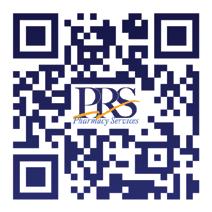
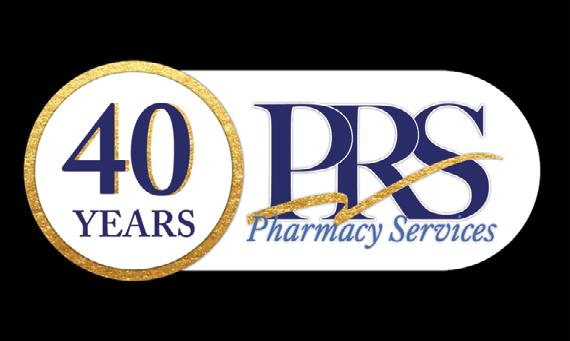

Keeping up with the times in your independent pharmacy can be a challenge, especially after the pandemic. With added services, fewer employees, and nonstop busyness, you don’t always know where to turn for help.
Believe it or not, your phone can be a very useful tool in your pharmacy. Download the right apps, and you can have everything from drug information to patient education at your fingertips. This list of mobile apps can lighten your load as you navigate your to-dos each day:

CDC VACCINE SCHEDULES: This is a free app that provides the most current versions of child/adolescent immunization schedules, a catch-up schedule for children and adolescents 4 months through 18 years, adult schedules (including recommended vaccines by age group and medical conditions), and an adult contraindications and precautions table.
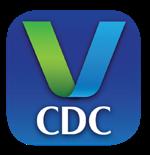
DRUGS.COM MEDICATION GUIDE : This guide is full of information that allows you to check drug interactions, identify pills, and create custom lists and reports. It also offers in-depth consumer information, FDA alerts, and a complete database of drug information.
DRUGS@FDA EXPRESS: This mobile version of the agency’s online database of information on approved drugs, allows you to search and browse by drug name, active ingredient, or application number. You can also view a list of recent approvals that are organized by date in the ‘Last 7 Days Approval’ option.
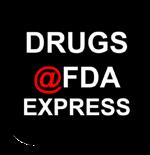
EPOCRATES : Widely regarded as a useful tool for pharmacists, this medical app is reliable, easy to use, and updated regularly. In the free version, you’ll find a drug interaction checker, pill identifier, resources for COVID-19, and drug coverage information for insurance plans. For a monthly fee, you can access premium features such as access to labs, disease monographs, ICD-10 codes, and even an infectious disease treatment selector.

GOOGLE TRANSLATE: If you work with non-English speaking patients, this app translates words and phrases in more than 60 other languages. The app also offers the option to do an instant, two-way speech so you can answer your patients’ questions.

LEXICOMP: This app is great for when you need to look up evidence-based drug information. Some of its unique features include pharmacogenomics databases, drug monographs, IV compatibility data, patient education forms, toxicology, and drug interactions. View more than 20 databases that feature updated, in-depth information on drugs, natural products, interactions, medical calculations, and more.
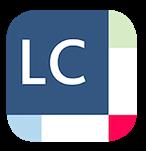
MERCK MANUAL PROFESSIONAL: This longtime, go-to source for medical knowledge now fits in your pocket. The app contains thousands of regularly updated articles, drug reference information, Illustrations, how-to videos on outpatient procedures and physical exams, and more.
MONTHLY PRESCRIBING REFERENCE (MPR) : Optimize medication management with this app’s drug database with real-time updates, a news feed, and tools such as medical calculators, quick-reference charts and guidelines, and prescribing information. You can also personalize your settings to therapeutic areas relevant to your practice.

PEPID : You’ll find all the tools you need to treat patients anywhere and at any time in PEPID. You can access their drug database, medical calculators, high-res pill photos, illustrations, news and alerts, pill identifier, drug-drug interactions, and hundreds of reference videos.
POCKET PHARMACIST: Need to look something up quickly? This app can be useful. As the company description says, “It feels like you’re talking to a live pharmacist versus reading through an encyclopedia.” If you need to search drug information or interactions, this is the app for you. You can also test your own knowledge through medication quizzes. Pocket Pharmacist is available for iPhone and iPad only.
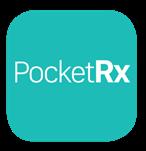
SANFORD GUIDE – ANTIMICROBIAL THERAPY: This tool includes clinical references for the treatment of infectious diseases, dosing tables, information on clinical syndromes as well as pathogens.

SKYSCAPE MEDICAL LIBRARY APP: This is a great decision-support tool for healthcare professionals that includes a comprehensive drug guide, a clinical resource with over 850 topics, a calculator with over 200 interactive tools, and breaking clinical news and drug alerts.
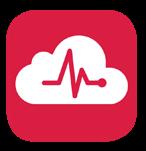
UPTODATE: If you’re looking for general clinical information, this is a great resource. It’s an evidence-based, physician-authored clinical support resource. Simply search by topic, including diseases, drugs, or procedures. The app covers 25 specialties, including internal medicine, psychiatry, infectious disease, and cardiovascular medicine. It also includes a number of medical calculators.
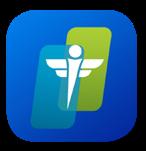


With a few exceptions, most of the apps listed have a free version you can try out. If you decide you’d like to use their premium features, you’ll pay a monthly or annual fee. Check reviews, try out the free features, and decide what apps might come in handy in your pharmacy.
Mobile phones can be a distraction in the workplace, but with these apps they can also be a blessing. You owe it to yourself to have the tools you need when you need them. Not only will you benefit, but so will your patients.


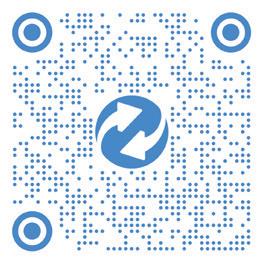
Flu season is back with a vengeance, and it’s been hitting unusually hard this year. While the sniffles, sneezes, and fevers usually begin around October, they arrived about six weeks earlier this season and with uncharacteristically high illness. Experts are projecting the worst flu season in 13 years. Add to that the threat of COVID-19 and RSV (respiratory syncytial virus), and you’ve got patients lining up at your pharmacy counter in droves. But are you ready?
If you haven’t already, set up your scheduling system so you’re prepared. Make sure you and your staff have a system in place for when things get busy. Be sure it’s clear what vaccines you are administering and prepare for multiple lanes of both scheduling and vaccines. You’ll need enough room to accommodate a swarm of patients needing immunizations while also maintaining social distancing. It’s also a good idea to know where required areas will be for service delivery.
Get your staff members ready by giving them specific tasks for the duration of their shift. Split the tasks up according to roles (pharmacy students, interns, technicians, or assistants), and be sure they’re supervised. Make sure that all staff members are trained on pharmacy protocols, injection-related policies, appropriate personal protective equipment (PPE) use, hand hygiene, and infection prevention and control procedures.
The workflow at and behind your pharmacy counter needs to be established for each part of the vaccination process. Your staff should be ready to: gather patient information and provide instruction before the patient arrives at your pharmacy; screen the patient for COVID-19 and answer any questions upon their arrival at the pharmacy; wear the appropriate PPE; perform hand hygiene when delivering the immunization; clean and disinfect the immunization area; and monitor the flow of patients between and after immunizations.
Now that your pharmacy staff is ready, take a look at your store shelves. Do you have all of the products your patients will need this flu season? Do you have enough? Increasing your store’s inventory of flu-related items is vital if you want to keep up with patient needs and demand. Shortages will happen, but the more flu- and cold-related inventory you stock up on ahead of time, the better prepared you’ll be.
Use this checklist below to make sure your pharmacy has what your patients will need most during this cold, flu, and COVID season.

• Fever, headache, and body aches: ibuprofen, acetaminophen, aspirin, and naproxen
• Congestion: oxymetazoline, phenylephrine, pseudoephedrine
• Cough: guaifenesin and dextromethorphan
• Multi-symptom: Nyquil, Dayquil, Mucinex, generic equivalents, etc.
• Oseltamivir (Tamiflu)
• Zanamivir (Relenza)
• Peramivir (Rapivab)
• Baloxavir (Xofluza)
• Elderberry: This is a powerful alternative to both prevent and fight cold and flu. Studies have shown it to significantly reduce the severity and duration of symptoms. Patients who have taken elderberry syrup reported symptoms clearing up on average of four days earlier than those taking a placebo.
• Vitamin C: Studies have shown that this vitamin can boost your immune system. It may even help protect against heart disease, cancer, and stroke.
• Vitamin D: When the sun is behind the clouds, it’s hard to soak up enough of this vitamin. Vitamin D can strengthen both your bones and your immune system.
• Iron: An immune booster that has shown to help keep energy levels up, iron is essential to blood flow and oxygen transfer in the blood. It’s a key component to heart, lung, and neurological function.
• Zinc: If used regularly, zinc can help to prevent the common cold. Like elderberry, it strengthens the immune system and can aid in reducing the length and severity of a common cold.
• Canned chicken noodle soup
• Facial tissues
• Hand sanitizer
• Heated blankets
• Heating pads
• Hot/cold packs
• Hot tea
• Humidifiers
• Lotion (for sore noses)
• Nasal strips
• Neti pots
• Orange juice
• Sports drinks
• Thermometers
• Throat lozenges
• Vaporizers
• Vapor rubs
• Warm socks
Once your pharmacy is stocked and ready for the flu season, it’s time to get the word out to your customers. The sooner, the better. You want to reduce overstock by the end of the season. Here are some ideas to get your customers interested in purchasing their cold and flu needs at your store:
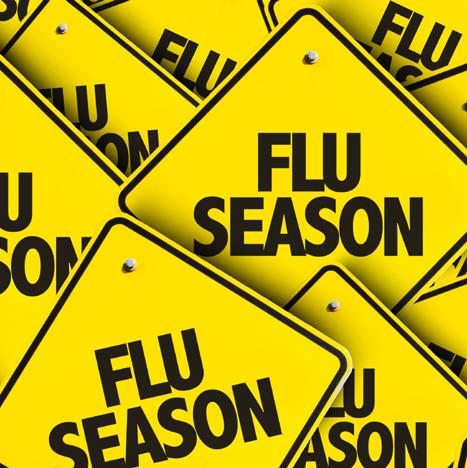
• Email: Your theme is cold and flu season. Your goal is to draw attention to your flu season inventory.
• Social media: Post offers for cold and flu items on all of your pharmacy’s social-media pages.
• Outdoor signage: Use banners to remind passersby that your store has everything they need for cold and flu season, including vaccines. Window clings also draw attention.
• In-store signage: Set up a small counter sign reminding patients that you stock all the cold and flu essentials they need.
‘Tis the season for various, infectious bugs floating through the air. Give your patients everything they need to fight them off by stocking up on cold and flu products. Take advantage of seasonal sales with these essential items and be sure to market them properly.
Your best bet is to preorder enough vaccines to last the season. This will ensure that they arrive early.
Put together some informational materials on vaccines and prepare consent forms for patients.
Be sure your staff understands the current protocols for vaccines, so they’re not administered improperly.
Find websites that advertise locations that administer the vaccine, and register your pharmacy.
Put together other supplies you’ll need when administering vaccinations (e.g. cotton, needles, and bandages).
Will you give vaccinations only during certain hours or all day? Will you allow walk-ins, or will it be by appointment only?
Will you rely on a sign advertising your flu shots, or will you also advertise via television, radio, or social media?
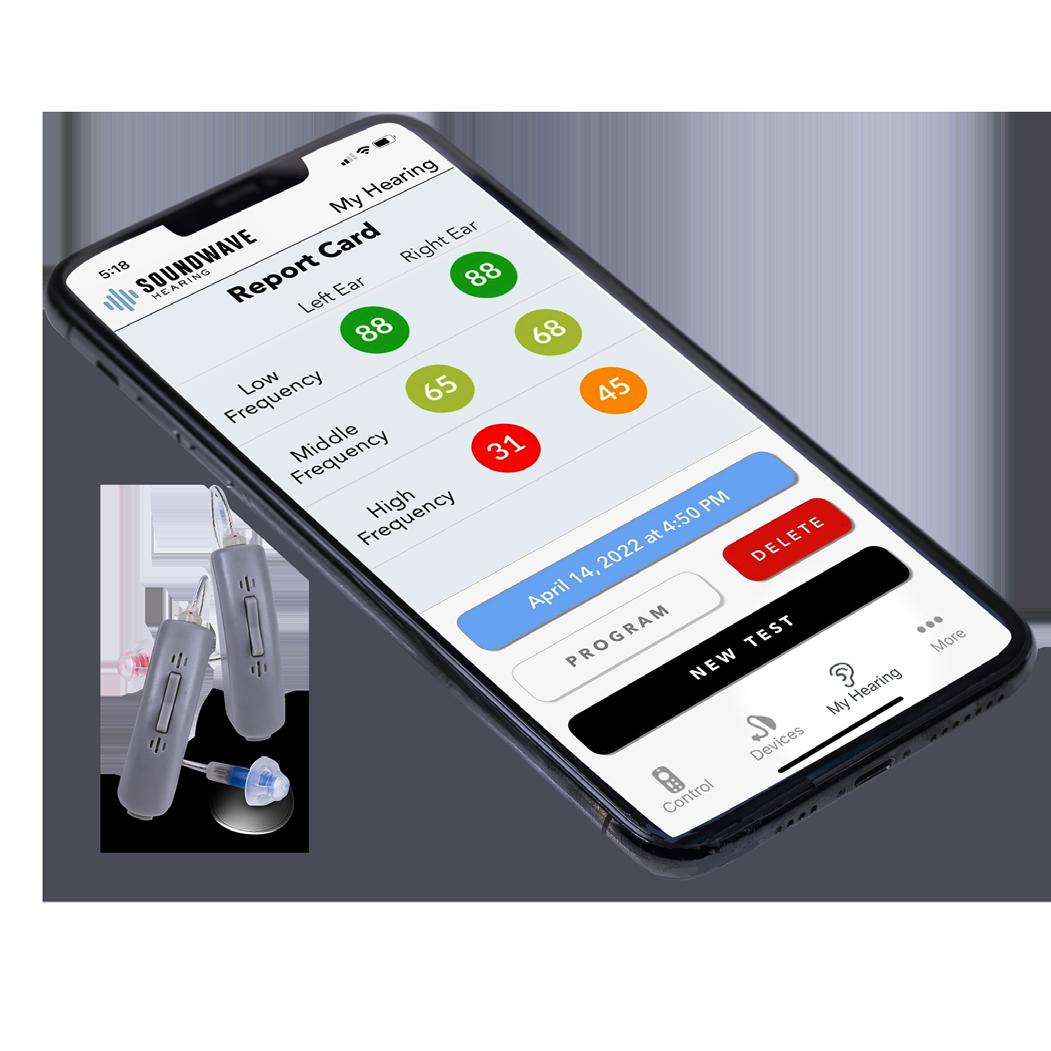

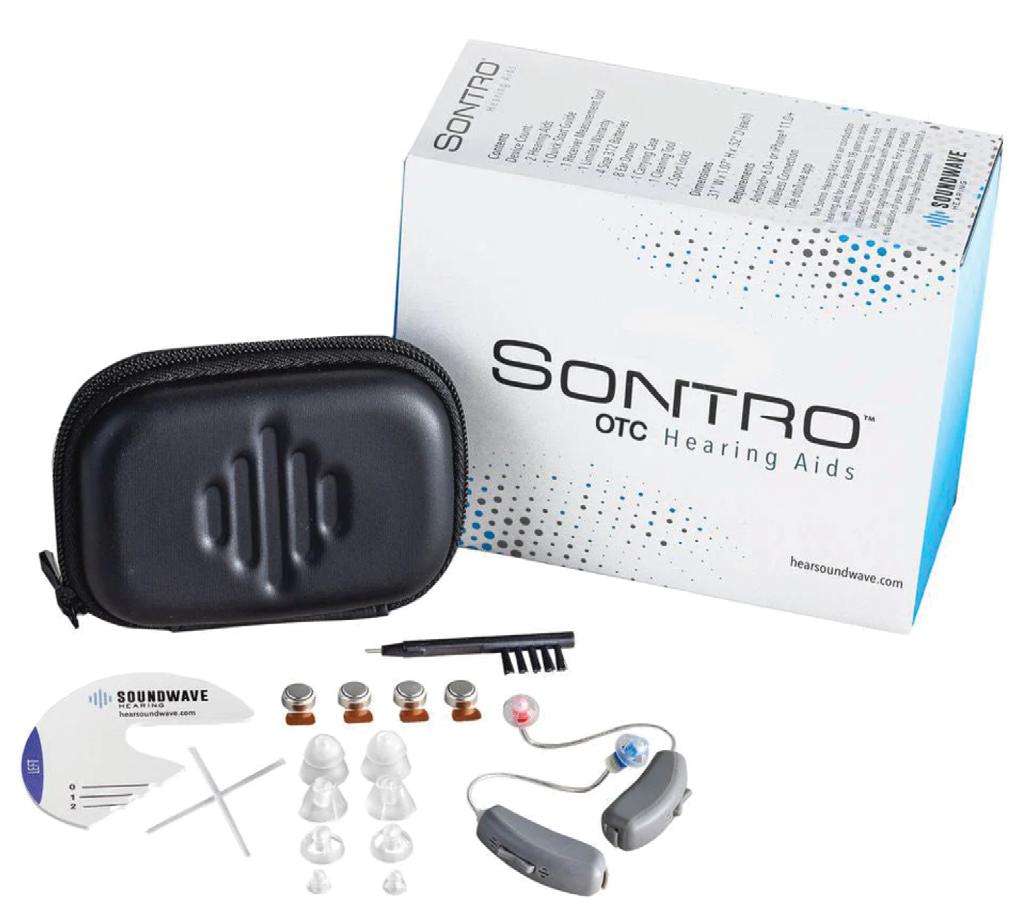




Your pharmacy should feel safe. Not only to your patients, but to you and your staff as well. Unfortunately, patients can get irate, and things can get unruly pretty quickly. Burglaries, crime, and angry behavior in healthcare workplaces were endemic even before the COVID-19 pandemic and opioid epidemic. But now, bad behavior is even more common.
According to the 2022 Healthcare Workplace Safety Trend Report produced by Stericycle, 71 percent of healthcare providers believe COVID-19 has had a negative impact on their sense of safety in the workplace. A whopping 82 percent of healthcare workers reported at least one episode of workplace violence during the pandemic, and 64 percent have been verbally assaulted.
That general data is echoed by the initial findings of the 2022 National Pharmacy Workplace Survey sponsored by the American Pharmacists Association (APhA) and the National Alliance of State Pharmacy Associations (NASPA).
“Workplace issues across pharmacy practice and their relationship to personal well-being and safety continue to be a critical issue,” said Ilisa Bernstein, PharmD, JD, APhA interim executive vice president and CEO. “We are concerned to see the
While you may not be able to completely cool down a heated situation with a patient or customer, you can avoid raising the temperature by following these four dos and a don’t.

Often, your patient will apologize. Even if not, cut them some slack. Smile and shake hands. This helps them recover some respect and shows your professionalism.
Avoid crossing your arms, which is a sign of defensiveness. It may be appropriate to smile, but take care not to look patronizing.
Listen. Then once your angry patient has calmed down, use their words to reiterate frustration. Show you've listened and understood.
No matter how vexing the circumstances, alternatives will bubble up. Offer some choices to your patient so they can feel more in control.
Let your patient let off steam. You deal with similar problems every day—they don’t. It’s tempting to offer a solution, but don't. Just let them vent.
most recent reporting confirms observed trends of pharmacy staff encountering threats and harassment from patients, consumers, and work colleagues.”
Reported experiences included verbal, emotional, and sexual harassment; threatened or actual physical harm; and microaggressions. In addition, incidences of threatening emails, social media harassment, and doxxing have also become more common. Doxxing involves the release of personal information online, including contact information or home addresses.
Spalitto’s Pharmacy in Kansas City, Missouri, has survived and thrived through rough times and tough customers since 1929. Anthony Spalitto, pharmacy manager and great-grandson of the pharmacy’s founder, works alongside his father, Pete Spalitto, pharmacy owner, and cousin, Tony Spalitto, PharmD. Anthony said the family-owned business emphasizes empathy.
Anthony Spalitto, pharmacy manager of family-owned Spalitto’s Pharmacy in Kansas City, Missouri, suggests a few hard-won tips to counter robberies.

USE A WIRELESS ALARM SYSTEM WITH REMOTE MONITORING.

If thieves cut the electricity to your business, you'll still be connected.

CLEARLY LABEL ALL MOTION SENSORS AND SECURITY CAMERAS.
“Breakroom door” is much clearer than especially if you’re looking at a text message in the middle of the night.

After response time to one break-in was slow, Spalitto contacted the Kansas City police and discovered pharmacy weren’t highly prioritized. Once he explained thefts included narcotics and other drugs, the police department raised the priority, quickening response times.


During one break-in, thieves cut all electricity and entered the pharmacy through the roof. Because the electricity was cut, there was no alarm. Burglars were in the pharmacy from late Saturday night to early Monday morning.
“We don’t know of a vulnerability until something happens,” said Spalitto. “Now we have a wireless alarm system with remote monitoring, and we receive notifications via text and phone. We have an attitude of learn and adapt.”
A philosophy of learn and adapt is indicative of community pharmacy as a whole—and it has served Spalitto’s Pharmacy well for 93 years.
According to the Occupational Safety and Health Administration (OSHA), workplace violence is “any act or threat of physical violence, harassment, intimidation, or other threatening, disruptive behavior that occurs at the worksite. It ranges from threats and verbal abuse to physical assaults and even homicide.” Sexual harassment is also considered workplace violence..
If you’re robbed, it’s easier said than done to avoid panicking. But try to keep in mind this advice from the DEA.
No matter what, your top priority is the safety of you and your employees. Do exactly as you’re told.

MOVE SLOWLY
Sudden movements might provoke an already skittish robber. Move deliberately.
Focus on characteristics such as race, height, weight, piercings, tattoos, hair, and facial features.
The majority of pharmacy thieves pass notes. If you can hang on to it, do.
Call 9-1-1. Lock the store. Secure the note, the scene, and anything else. Do not touch anything.
HAD A NEGATIVE IMPACT ON THEIR SENSE OF SAFETY IN THE WORKPLACE.



